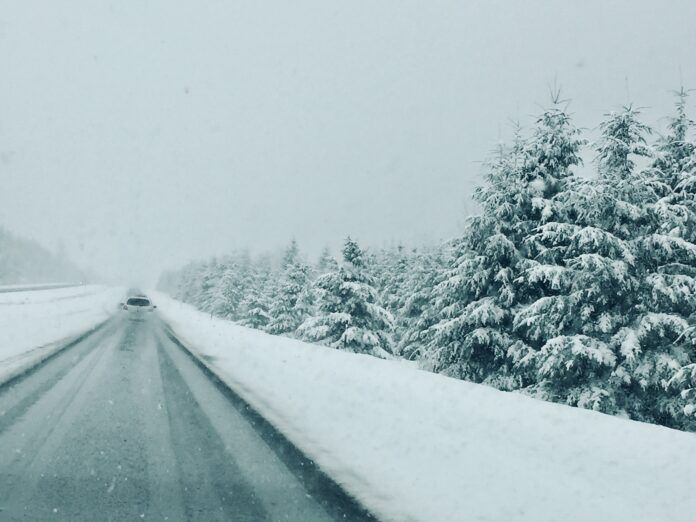“On average on Vancouver Island, crashes due to not driving to road conditions increase by 52 per cent when comparing October to December.”
So says ICBC Road Safety and Community Coordinator Caroline Robinson as a warning in the lead-up to the first snowfall of the season.
We’re expecting 10 to 25 cm of snow across Vancouver Island from Tuesday morning until Wednesday morning according to Environment Canada’s snowfall warning. The changing conditions will affect the roadways.
“I really want to encourage everyone who might be going out on the road to take some special care and attention,” says Robinson. “It can be very stressful when you see the first snow and there’s lots you can do to be ready.”
She has a few tips for any drivers looking to be prepared ahead of the snowy winter weather.
- Keep your fluids topped up – including your gas tank being at least half-full.
- Having windshield wipers and scrapers/snow brush ready for the winter season.
- If you’re going for a longer trip, being prepared should a breakdown occur includes having a kit in your car with things like:
- sleeping bag
- a shovel
- tow rope
- cell phone charger
- water
- gloves/scarf
- Talk to a tire professional to see what condition your tires are in and if they are properly inflated.
Another key thing is driving to the conditions.
“When you see a posted speed limit – that is for ideal conditions, for dry roads,” says Robinson. “You want to make sure that you are reducing your speed as the road conditions deteriorate.”
And if they deteriorate to a level to which you’re no longer comfortable driving, Robinson says you shouldn’t be afraid to pull over.
“If you don’t have to drive, please don’t,” says Robinson.
She recommends you consider taking public transit, a taxi, working from home, getting a ride from someone who is comfortable driving in snow, or waiting until the roads are cleared.
There are some areas of the island where you need to be extra careful because of the change in altitudes – including the Malahat Drive.
“As you get higher, the temperature will drop, and road conditions can accordingly deteriorate,” says Robinson. “Please be extra careful. Anticipate that as you’re climbing, the temperature might drop and the current road conditions might even get worse. Very important to be prepared for those locations.”
Robinson’s final tip was about snowplows which are rarely on the roads meaning most aren’t used to driving around them.
“Maintain a safe following distance and please don’t pass them,” says Robinson. “They often have a blade that comes out to the side, and you may not see that through the snow that it sprays as it’s going down the road.”






